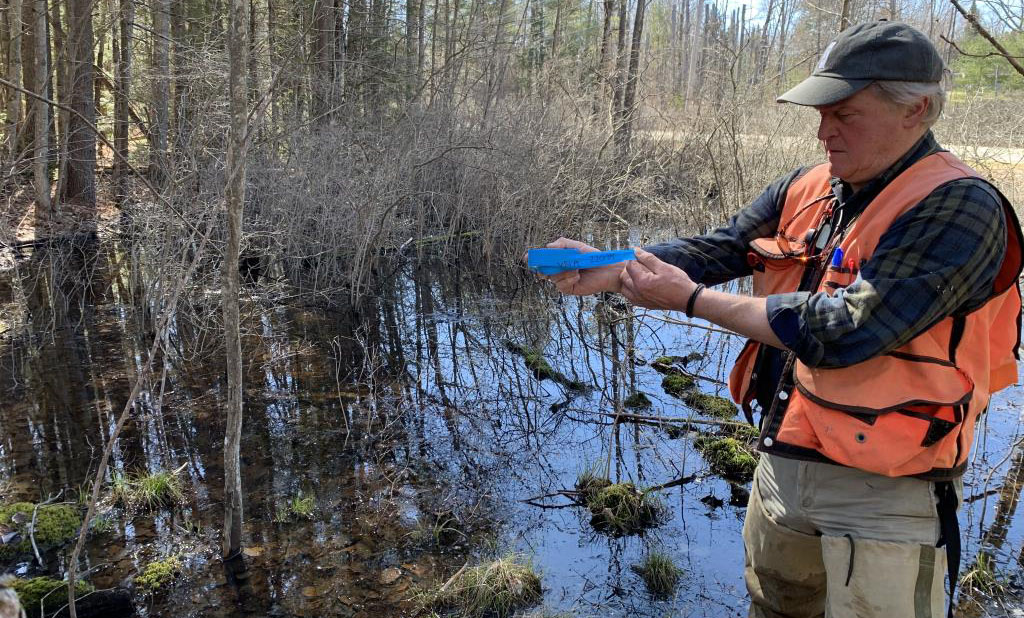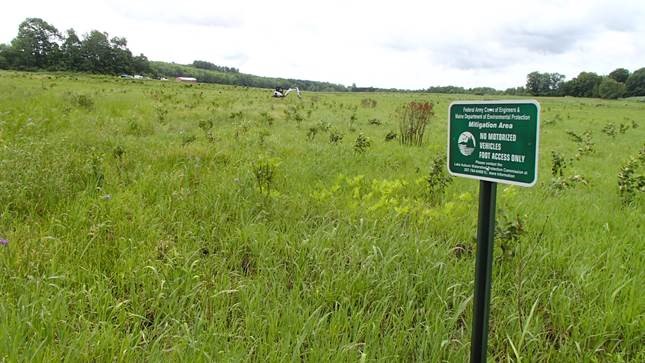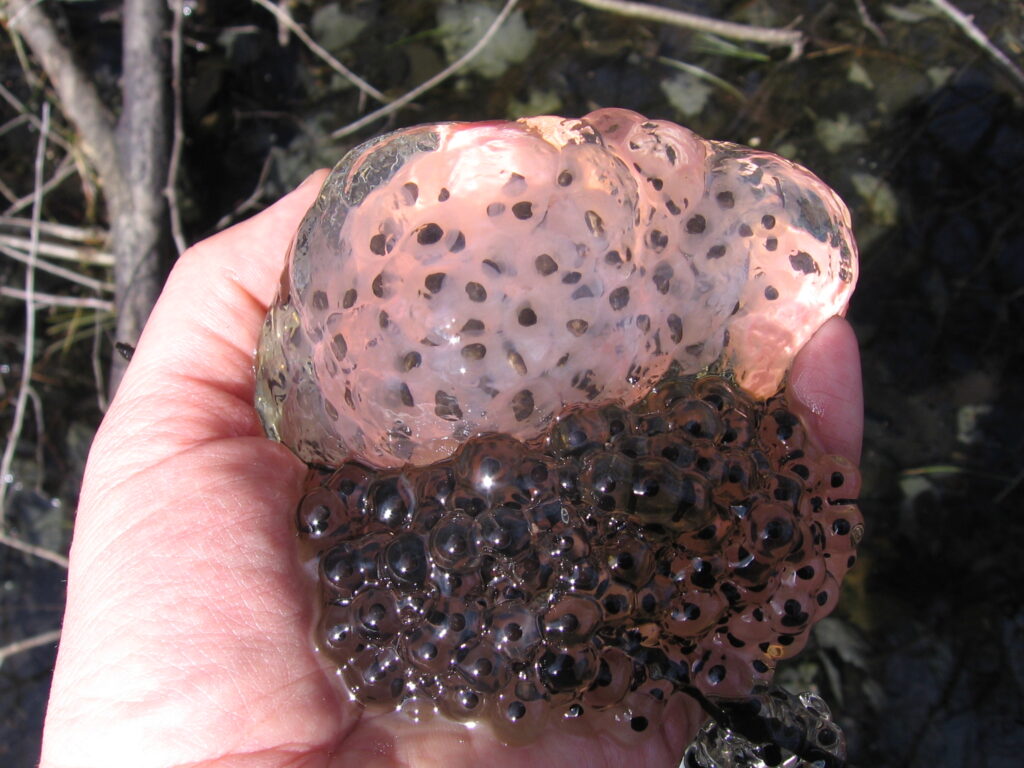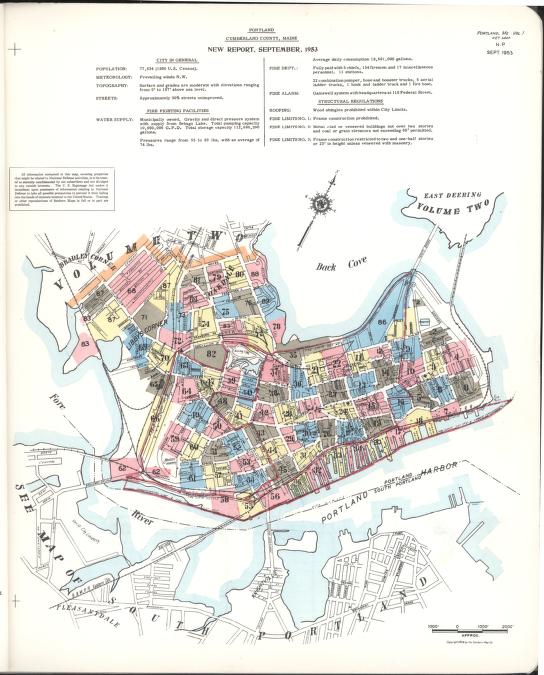
PLAN AHEAD – KNOW YOUR LAND

Whether you are buying, selling, or developing land, there are important environmental characteristics that may limit the value and suitability of the property in question. Does the site have wetlands, streams, vernal pools, or associated setbacks from abutting parcels? Is there a threatened or endangered wildlife habitat? Has the soil or groundwater been contaminated in any way? Is there shallow ledge, clay soils, or other physical limitations to building? These are a few of the important questions that should be addressed before investing in or developing a piece of property.
If you are planning development in 2023, now is the time to start thinking about your environmental and natural resource features. Sebago Technics, Inc. (STI) can help you identify all site constraints that play an important role in determining property value and how property may be developed.
RULES & REGULATIONS

Waters of the United States
The US Environmental Protection Agency (EPA) and the US Department of Army (Corps of Engineers) Revised Definition of Waters of the United States (WOTUS) became effective on March 20, 2023.
Northern Long-Eared Bat
The US Fish and Wildlife Service issued the Final Rule to reclassify northern long-eared bat (NLEB) as endangered under the Endangered Species Act which becomes effective on March 31, 2023.
Changes to Come?

Compensatory Mitigation
The New England District of the Corps announced a Public Notice will be issued on or around March 28, 2023, concerning permanent wetland impacts. Thirty (30) days following the notice, permanent wetland impacts exceeding 5,000 sq. ft. will require compensatory mitigation (In Lieu Fee or restoration) and will require Pre-Construction Notification (The previous threshold was 15,000 sq. ft. and had been eligible for Self-Verification Notification).

Ordinary High Water Mark
On December 1, 2022 the Corps and EPA announced for Public Comment and testing an Interim Draft of the National Ordinary High Water Mark Field Delineation Manual for Rivers and Streams. A data sheet was included for identifying aquatic resources that may be subject to regulatory jurisdiction under Section 404 of the Clean Water Act and/or the Rivers and Harbors Act of 1899. The Comment Period ends December 1, 2023.
VERNAL POOL IDENTIFICATION – April & May
Identification of Vernal Pools should be one critical part of your due diligence for marketing or developing property.

Vernal Pools are temporary to semi-permanent bodies of water that are the primary breeding habitat for several species of amphibians. STI has assisted developers and landowners with vernal pool assessments and regulatory permitting since regulations were adopted in 2007. Vernal pools are regulated under the Natural Resources Protection Act by the Maine Department of Environmental Protection (DEP) and under the Maine General Permit by the U.S. Army Corps of Engineers (USACE).
Vernal pools can only be surveyed in the Spring (April 10th to May 10th in Southern Maine) before they dry out. Don’t miss this brief window of opportunity!
Wetlands & Wetlands of Special Significance (WOSS)

Wetland characterization and delineation quantifies the type and amount of wetlands impact of a potential project. As a buyer, seller, or developer, understanding the wetlands on a property, and whether they are of special significance to different local, state and federal agencies, can dramatically affect the value and possibilities of the land. Different types of wetlands may have various features that lead to restrictions by different levels of government.
For more than 40 years, Sebago Technics has helped clients, on a wide variety of projects, understand the process, constraints and opportunities of a given piece of land. Let Sebago Technics help you navigate various DEP and Corps of Engineers regulations to get your project underway today!
WATER OF THE UNITED STATES (WOTUS)

The “Revised Definition of ‘Waters of the United States’” took effect on March 20, 2023 and is founded on the pre-2015 definition. The current Rule is used to determine whether a wetland or stream may be subject to jurisdiction by USACE. Jurisdiction is applied to certain types of waters (including lakes, ponds, rivers, streams and wetlands) that meet either- 1) the “relatively permanent standard” or 2) the “significant nexus standard”. The Rule also identifies eight specific example of waters that are not jurisdictional as WOTUS which include: artificial lakes and ponds, certain ditches or swales and some forms of waterfilled depressions created by construction or excavation in dry land. Wetland scientists at Sebago Technics make use of the 1987 Corps of Engineers Wetland Delineation Manual and its Regional Supplements to identify and map features regulated as WOTUS for consideration during project planning and determination of applicable permitting.

NORTHERN LONG-EARED BATS
(Myotis Septentrionalis)
The Northern Long-Eared Bat (NLEB) is found in 37 states throughout the Eastern and North Central United States. In Maine, NLEB typically hibernate in caves and abandoned mines during winter. In warmer seasons, NLEB roost alone or in small colonies underneath bark or in cavities of trees and/or rock crevices. Due to a species decline (up to 99%) from White-Nose Syndrome, a deadly fungal disease, the USFWS recently changed the NLEB listing from threatened to endangered. Listings under the Endangered Species Act must be addressed during permitting by the Corps of Engineers. Now classified as endangered, the previously relied on 4D Rule is no longer applicable. For preparation of permit applications requiring Corps of Engineers approval, Sebago Technics uses Information for Planning and Consultation (IPaC) to determine whether a project has an effect on NLEB and how this must be addressed.

PHASE 1 ENVIRONMENTAL SITE ASSESSMENTS (ESA)
The Phase I ESA involves a review of records, a site inspection, and interviews with past and current owners, occupants, neighbors, and local government officials. An ESA should be conducted as due diligence and risk assessment in the purchase of commercial or industrial property. The main purpose of a Phase I ESA is to assess the potential for Recognized Environmental Concerns of a property.
This is accomplished by examining the history of the property for soil or groundwater contamination resulting from past uses or neighboring sites that may be impacting the property’s value or in worse cases causing civil liability. This report is commonly prepared for real estate and business transactions such as undeveloped land purchases, building and business purchases, leases, new residential developments, and bank loans.
For home buyers, you may want to consider a Phase I ESA if you are buying a house in or adjacent to a commercial area or other environmentally sensitive business, prior to obtaining the title.
Natural Resources Services:
- Wetland Delineation & Mapping
- Vernal Pool Surveys
- Wetland Functional Assessments
- Compensatory Wetland Mitigation Design, Implementation & Monitoring
- Wetland Alteration Permitting (Municipal/DEP/USACE)
- Global Positioning System (GPS) Mapping
- Geographic Information System (GIS)
- High Intensity Soil Surveys
- Preliminary Soils Investigations
- HHE-200 Septic System Applications
- Site Evaluations and Subsurface Wastewater Disposal System Designs
- Septic System Inspections
Environmental Assessments:
- Site Transmission Analysis
- Phase I/II Site Assessments (ESAs, VRAPs)
- Indoor Air Quality Assessments
- Underground Storage Tank Removal Assessments
- Resource Conservation Recovery Act (RCRA) Hazardous Waste Close-Outs
- Spill Prevention Control & Countermeasure (SPCC) Plans
- Stormwater Pollution Prevention Plans (SWPPP)
- Maine Multi–Sector General Permit (MSGP) Stormwater Sampling

Sebago Technics is a Maine-based creative engineering collective that is dedicated to protecting and preserving the environment. With a team of experienced and knowledgeable environmental experts, we offer a wide range of services to support your project needs. Whether you require environmental site assessments, wetland delineations, vernal pool surveys, or other environmental consulting services, our team can provide you with the expert guidance you need. We understand the importance of protecting the environment while still meeting project goals, and we work closely with our clients to develop effective and sustainable solutions.
To learn more about our services, please contact Cole Peters, PWS, CG, Environmental Division Manager.

